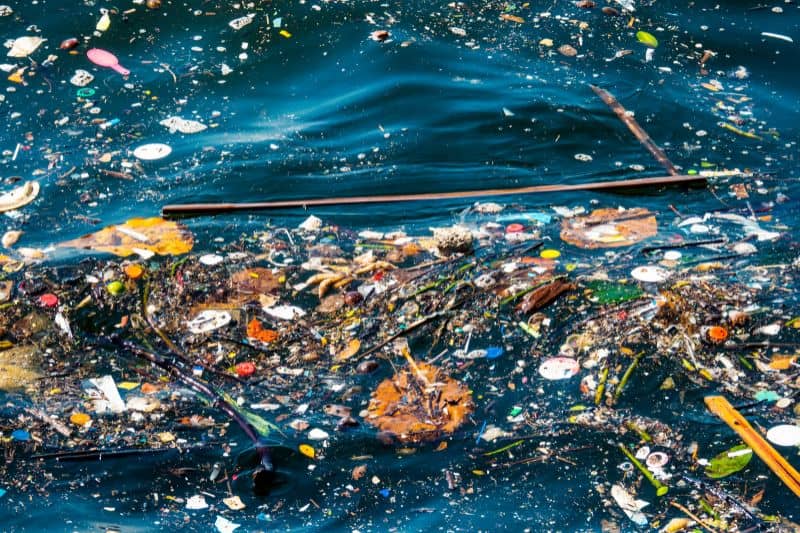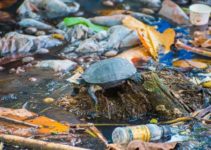Water is the greatest gift of nature. Sadly, humans have exploited this natural resource to a level where controlling its pollution is impossible.
Most people don’t factor in that water pollution can immensely affect the quality of human life and that of every other creature.
But then, what exactly do we mean by “water pollution”?
Well, in this article, we will closely examine what water pollution is and some exciting facts about water pollution that you need to know.
Let’s get started right away!
According to Wikipedia,
“Water pollution is the contamination of water bodies (e.g. lakes, rivers, oceans, aquifers and groundwater). Water pollution occurs when pollutants are directly or indirectly discharged into water bodies without adequate treatment to remove harmful compounds. Water pollution affects plants and organisms living in these bodies of water. In almost all cases the effect is damaging not only to individual species and populations, but also to the natural biological communities.“
Sooner or later, we will have to RECOGNIZE that the Earth has rights, too, to live without pollution. What mankind must know is that human beings cannot live without Mother Earth, but the planet can live without humans.
~ Evo Morales
Below are 50+ Interesting Facts on Water Pollution
Fact 1: The total volume of water on Earth is about 1.4 billion km, and about 70% of the planet is covered in water.
Fact 2: The largest quantities of water are in the oceans.
Fact 3: Freshwater in the world is only 2.5% of the total water available on this planet. Make sure the water you drink is clean by using a water filter on your refrigerator.
Fact 4: Around 70% of industrial waste is dumped into the water bodies, polluting the usable water supply.
Fact 5: The industry dumps an estimated 300-400 MT of polluted waste into water bodies yearly. It includes tons of heavy metals, solvents, toxic sludge, and other wastes.
Fact 6: Globally, 80 percent of municipal wastewater is discharged into the environment untreated.
Fact 7: At least 320 million people in China do not have access to clean drinking water.
Fact 8: 20% of the groundwater in China is used as drinking water, which is highly contaminated with carcinogenic chemicals that cause high levels of water pollution.
Fact 9: More than 70 percent of China’s rivers and lakes are polluted, government reports have said, and almost half may contain water unfit for human consumption or contact.
Fact 10: China’s Yangtze River is the world’s third longest river. According to WWF, the annual discharge of sewage and industrial waste in the Yangtze River has reached about 25 billion tons, 42 percent of the country’s total sewage discharge.
Fact 11: Fourteen billion pounds of garbage, mostly plastic, is dumped into the ocean yearly.
Fact 12: The nuclear crisis that occurred in Japan after the 2011 Tsunami prompted the Japanese government to dump 11 million liters (about 3 million gallons) of radioactive water into the Pacific Ocean.
Fact 13: The same 2011 tsunami debris in Japan created a 70 km long island of debris that is floating out into the Pacific Ocean.

Fact 14: 15 million children under the age of five die each year because of diseases caused by drinking contaminated water.
Fact 15: The Ganges River in India is one of the most polluted in the world. It contains sewage, trash, food, and animal remains.
Fact 16: According to the WHO (World Health Organization) and the United Nations Children Fund (UNICEF), around 2.5 billion people cannot access improved sanitation.
Fact 17: Groundwater in Bangladesh is contaminated with arsenic, a very toxic, acute poison, and a carcinogen. Approximately 85% of the total area of Bangladesh has contaminated groundwater.
Fact 18: In America, 40% of the rivers and 46% of the lakes are polluted and are considered unhealthy for swimming, fishing, or aquatic life.
Fact 19: About 10% of America’s beaches fail to meet the federal benchmark for what constitutes safe swimming water.
Fact 20: According to UNICEF, more than 3000 children die every day globally due to the consumption of contaminated drinking water.
Fact 21: Water pollution is the major cause of diseases like cholera and typhoid.
Fact 22: On average, 250 million people worldwide succumb to diseases related to water pollution, and that’s each year.
Fact 23: According to the World Health Organization, 3.2 million children under the age of five in developing nations die each year as a result of unsafe drinking water and poor sanitation.
Fact 24: 80% of water pollution is caused by domestic sewage, like throwing garbage on open ground and water bodies.
Fact 25: According to the survey done by Food & Water Watch, approximately 3.5 billion people in 2025 will face water shortage issues. This will be mainly due to water pollution. This is likely to happen because world pollution is increasing tremendously, with more water sources getting contaminated due to water pollution.
Fact 26: Agriculture accounts for 70% of total water consumption worldwide and is the single-largest contributor to non-point-source pollution to surface water and groundwater. The other key sources of water pollution are human settlements and industries.
Fact 27: The United Nations Food and Agriculture Organization estimates that 38% of the European Union’s water bodies are under pressure from agricultural pollution.
Fact 28: In a global review of water pollution from agriculture, out of the 3 928 km3 of freshwater that is withdrawn every year, it is estimated that only 44% is consumed, mainly through evapotranspiration by irrigated agriculture.
The remaining 56% (2 212 km3 per year) is released into the environment as urban wastewater (approximately 330 km3), industrial wastewater – including cooling water – (approximately 660 km3), or agricultural drainage (approximately 1 260 km3).
Fact 29: As per U.S. EPA estimates, every year in the U.S., 1.2 trillion gallons of sewage from households, industries, and restaurants are dumped into U.S. water annually.
Fact 30: In the United States, there are over 20,000 known abandoned and uncontrolled hazardous waste sites, which could contaminate the groundwater if there is a leak.
Fact 31: Asia has more polluted rivers than anywhere else. Most of it contains bacteria created from human waste.
Fact 32: About two million tons of human waste is disposed of in water daily.
Fact 33: Plastic waste, being a major water pollutant, is causing huge destruction of marine life and is believed to be responsible for the deaths of more than 100,000 sea mammals, sea birds, and various types of fish every year.
Fact 34: Every year, more people die from unsafe water than from all forms of violence, including war.
Fact 35: Canada has 10 most polluted rivers– some of which are the Petitcodiac, Okanagan, and Eastmain.
Fact 36: Globally, unsanitary water supplies also exact a health toll in the form of diseases. At least 2 billion people drink water from sources contaminated by feces, according to the World Health Organization, and that water may transmit dangerous diseases such as cholera and typhoid.
Fact 37: The waste produced in the river contains bacteria, parasites, and viruses. These cause life-threatening diseases like diarrhea, cholera, and typhoid.
Fact 38: Rivers in the Asian subcontinent are considered to be the most polluted. The bacteria (from human waste) found in these rivers are 3 times as much as the global average.

Fact 39: About 700 million people worldwide drink contaminated water.
Fact 40: The most important water contaminants created by human activities are microbial pathogens, nutrients, oxygen-consuming materials, heavy metals, and persistent organic matter, as well as suspended sediments, nutrients, pesticides, and oxygen-consuming substances, much of it from non-point sources.
Heat, which raises the temperature of the receiving water, can also be a pollutant. Pollutants are typically the cause of major water quality degradation around the world.
Fact 41: About 1.2 billion people, or 1 in 3 people in rural areas, defecate in the open. Open defecation poses a human health risk and compromises quality in nearby water bodies.
Fact 42: Aquatic animals have faced an estimated extinction rate five times more than terrestrial animals.
Fact 43: According to WHO and UNICEF, approximately 894 million people globally don’t have access to improved water sources.
Fact 44: Over 30 billion tons of urban sewage are discharged into lakes, rivers, and oceans each year.
Fact 45: Leather and chemical industries cause are major contributors to water pollution and are emerging leading market economies.
Fact 46: As per reports by UNESCO, 27% of the urban population do not have piped water in their homes.
Fact 47: An estimated 1000 children die every day in India due to polluted water.
Fact 48: Lack of safe drinking water and sanitation in cities leads to cholera, malaria, and diarrhea.
Fact 49: BP caused a Huge oil spill in 2010. Over 1,000 animals, i.e., birds, turtles, and mammals, were reported dead, and many were on the endangered species list.
Fact 50: Each year, 1.2 trillion gallons of untreated sewage, stormwater, and industrial waste are dumped into U.S. waters.
Fact 51: The Mississippi River is a giant, slow-moving river where agricultural runoff is one of the leading causes of water pollution as much as other rivers in the United States. Current agricultural practices lead to nutrient loading and, in turn, to eutrophication.

Fact 52: The Mississippi River carries an estimated 1.5 million metric tons of nitrogen pollution into the Gulf of Mexico each year, creating a “dead zone” in the Gulf each summer about the size of New Jersey.
Fact 53: Nitrate from agriculture is the most common chemical contaminant in the world’s groundwater aquifers.
Fact 54: High levels of nitrates in water from nutrient pollution can also be particularly harmful to infants, interfering with their ability to deliver oxygen to tissues and potentially causing “blue baby syndrome.”
Fact 55: Cruise ships are also a major source of water pollution. They produce over 200,000 gallons of sewage, mostly released into the ocean. They are also causing at least 35,000 gallons of water contamination due to the oil spill.
Even though people have already started taking precautions, the water pollution levels are rising rapidly, and there is little hope left in the polluted water bodies. One big step that every human being can take to prevent water pollution is to minimize water contamination and wastage from their side at every possible level. This way, we can save some clean water for future generations.







